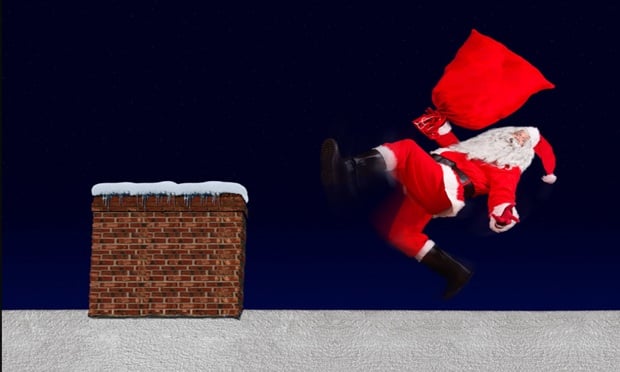Experts Say Hurricane Danger Ignored
By Mark E. Ruquet
NU Online News Service, May 28, 3:22 p.m. EST?Buck passing that allows flood zone building could undo many of the loss prevention gains from hurricane research in the 10 years since Hurricane Andrew devastated Florida, two experts in the business of forecasting catastrophe impacts said.
The pair of catastrophe modelers from SwissRe said a lot of knowledge and know-how has been gained, but dangers still lurk in the eye of any coming hurricane.
Andrew Castaldi, head of catastrophe and perils, and Dr. Gerry Lemcke, deputy head of catastrophe perils, discussed the current state of preparedness, for both the insurance industry and communities on the eve of a major hurricane conference.
The session in Miami Thursday and Friday at the Florida International University is the Hurricane Andrew 10-Year Anniversary Summit.
With hurricane season set to begin June 1, forecasters are predicting 12 named storms and seven hurricanes for the Atlantic basin.
By some reckoning, there is a 57 percent chance the U.S. East Coast could be hit by a major hurricane this season, and a 75 percent chance the entire U.S. coastline through the Gulf of Mexico could see a hurricane reach landfall.
Mr. Castaldi said that much research work done over the past 10 years has meant saving lives in the event of a storm. However, he and Mr. Lemcke said predicting the amount of loss that could occur from a storm remains a significant problem.
While there is a lot of historical data about events, points out Mr. Lemcke, there has not been much progress for the insurance industry when it comes to looking at the overall picture of losses.
In order to know the severity of loss to the industry, experts need to know the severity of the storm in advance and this remains a difficult area of determination.
"There is still a lot of room to improve," Mr. Lemcke said.
Mr. Castaldi said companies have taken some lessons away from Andrew. Ten years ago, many insurance companies were "caught blind," and didn't know they could see that much loss, he said.
Insurers have a better understanding of the exposure today, and though it remains difficult to predict the amount of loss from a storm, they are prepared for the worst.
"Companies are well prepared and know what is on the horizon," Mr. Castaldi said. "They know what to do the day after."
Company's reserves are better prepared for a catastrophic event and insurers are "not going to fold" over the losses, said Mr. Castaldi. He noted that SwissRe is also fully prepared "for this and other multiple disasters."
Another factor in this equation is the improvement in building methods impelled by tougher construction codes and enforcement. Additionally there is the Institute For Business & Home Safety seal of approval stamp that is placed on homes meeting the stricter standards. These elements should combine to substantially reduce structural storm damage to homes and businesses, Mr. Castaldi pointed out.
However, building has continued in some areas that are considered flood prone, said Mr. Lemcke, especially near the coast.
Such construction raises concern that much of the effort by experts over the years may be defeated. While wind speed is the major item of discussion in any storm, people forget that the major damage from any hurricane is the storm swell that causes coastal flooding, he said.
There is a lack of will on the part of some public officials to deal with the issue, Mr. Castaldi asserted. They are looking to insurers to dissuade homeowners to not build in these areas by not providing coverage in the flood prone areas. However, should companies not provide insurance, they would be accused of redlining, he said.
"Everyone is looking for someone else to solve the problem," Mr. Castaldi remarked.
Knowing the affects of a storm surge in a given area is also an area where more information is needed, Mr. Lemcke said. While large metropolitan cities have studies produced by the Army Corps of Engineers on this, smaller coastal areas have no such studies. He suggested this is an area major insurers should begin to look into.
However, Mr. Lemcke pointed out, the ability to predict what could happen during a hurricane event is steadily seeing improvement. He said forecasters have improved their ability one percent each year and forecasting is 30 percent better than it was during Andrew.
The experts concluded that while a lot has been accomplished to produce a forecast that saves lives and protects communities, much work still remains to produce a forecast that helps insurance and reinsurance companies predict losses.
Want to continue reading?
Become a Free PropertyCasualty360 Digital Reader
Your access to unlimited PropertyCasualty360 content isn’t changing.
Once you are an ALM digital member, you’ll receive:
- Breaking insurance news and analysis, on-site and via our newsletters and custom alerts
- Weekly Insurance Speak podcast featuring exclusive interviews with industry leaders
- Educational webcasts, white papers, and ebooks from industry thought leaders
- Critical converage of the employee benefits and financial advisory markets on our other ALM sites, BenefitsPRO and ThinkAdvisor
Already have an account? Sign In Now
© 2024 ALM Global, LLC, All Rights Reserved. Request academic re-use from www.copyright.com. All other uses, submit a request to [email protected]. For more information visit Asset & Logo Licensing.








